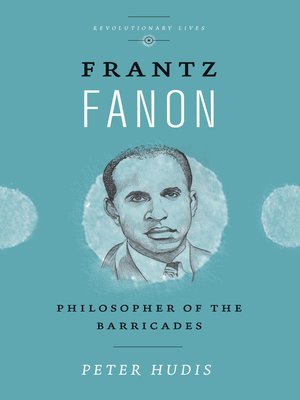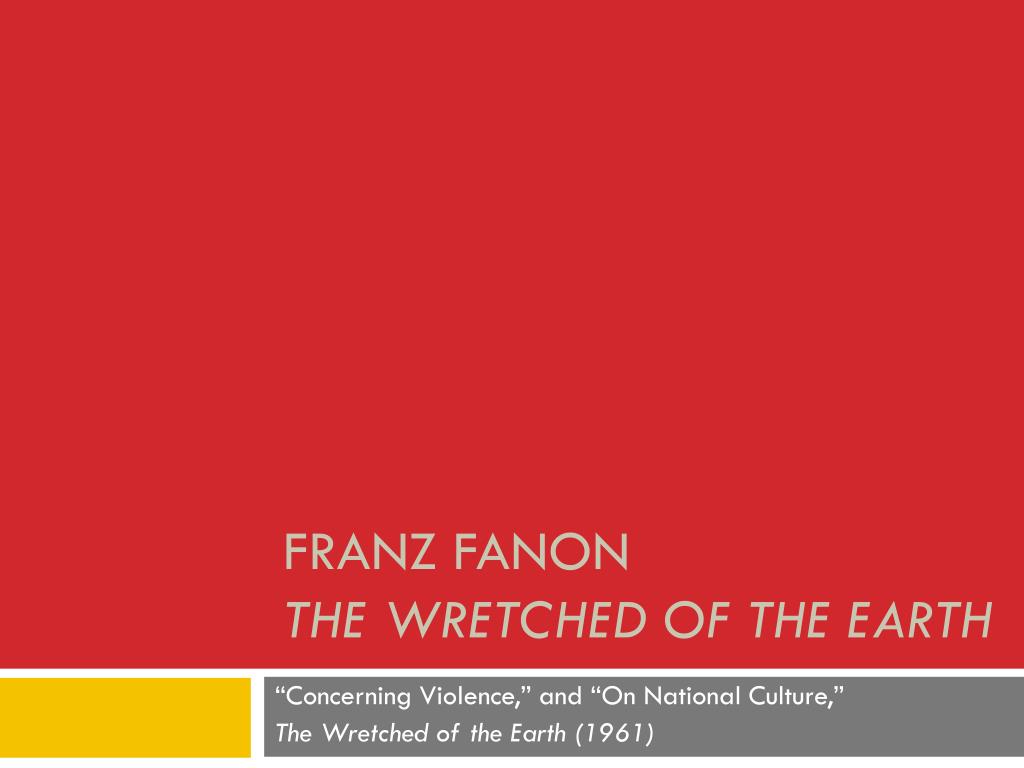

We were astounded by the personnel’s devotion to the job of giving the population back its health, the number of patience they handled daily, the quality of service, and their gentleness.Īlgiers soon became a hub for liberation and antifascist organizations in the sixties. More than once I accompanied my friend Zohra Sellami and her brother, who was epileptic, to a Chinese clinic along the coast.
#Franz fanon excerpts how to#
How to convert French into into the languages they spoke, even summarily? Algerian Arabic, the only idiom in which the majority of the population could explain their state of health, took more time and patience to understand. In addition, these teams had to face the language problem. They became indispensable in a place where the hospitals and clinics had not only emptied out of personnel in the months preceding independence but suffered from a lack of equipment and medicine. In addition to these brave individuals, countries that had provided unswerving support for an independent Algeria during the war cooperated with the new government by sending specialists, above all medical teams: Yugoslavia, Cuba, China, Bulgaria, Egypt, Syria, Lebanon, Soviet Union and others. They were idealists who would build a new world visionaries whose consciences told them they had to come. They were called pieds-rouges, a clever if unflattering term, placing them in opposition to the pieds-noirs who had fled the country. Many were highly trained: doctors, engineers, technicians, teachers, professors, lawyers. There were men who had lit out or gone underground when they were called up for military service in France, even a few deserters from the French army. Many had worked with the FLN during the war as porteurs de valises (suitcase carriers), transporting people, arms and money for the revolution. Several thousand foreigners, partisans of an independent Algeria, arrived from France, Tunisia, and Morocco during those first months of the new country. (“They’re Communists,” he said.) Once independent, Algeria began backing and training the MPLA in addition to liberation movements in the Portuguese colonies of Mozambique, Guinea-Bissau, and Cape Verde. In the summer following that meeting, during the WAY congress in Accra, an MPLA delegate arrived, an impressive young man whom Mohammed and I took under our wing, much to Fanon’s annoyance. The group provided me with documents in French and Portuguese that I translated and distributed to the UN delegations. Armed activity inside Angola had not yet begun, but the Portuguese dictator António Salazar had outlawed the new organization and arrested some of its leaders. Here I found a handful of silent men around their spokesman, who asked me to press their case abroad. We met in a bare, thatched-roof hut on the outskirts of the Guinean capital, the group’s first foothold in Africa. In Conakry in early 1960, as I made my rounds to organize West African tours for the WAY congress to be held that summer in Accra, I was contacted by a small group of Angolans who had formed an organization called MPLA (Popular Movement for the Liberation of Angola) unknown at the time to the outside world. The delegation was headed by Franz Fanon, who also travelled to Leopoldsville for meetings with Lumumba during his short time as premier of the new independent Congo. I remember this envoy as, at first, a totally inexperienced young man, overwhelmed by his responsibilities he sweated and stuttered constantly.Īlgeria’s initial support of the group was the result of an Algerian delegation’s meetings with Patrice Lumumba and Holden Roberto in Accra in 1958, at the first All-African People’s Conference.

The first to arrive was the representative of an Angolan group, the Union of Peoples of Angola (which in 1962 became the Angolan National Liberation Front), whose president was Roberto Holden. Activists from other liberation movements, who wanted to learn how to work with the UN, were sent to us for training. The Algerian Office became more than the home for a single independence campaign.


 0 kommentar(er)
0 kommentar(er)
